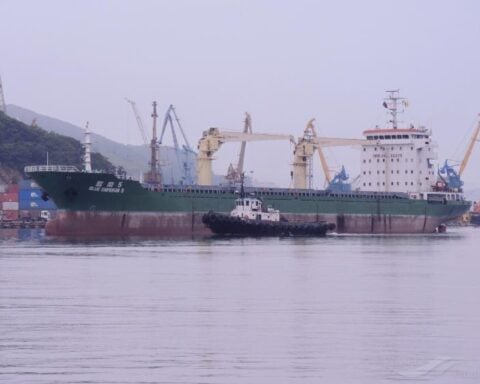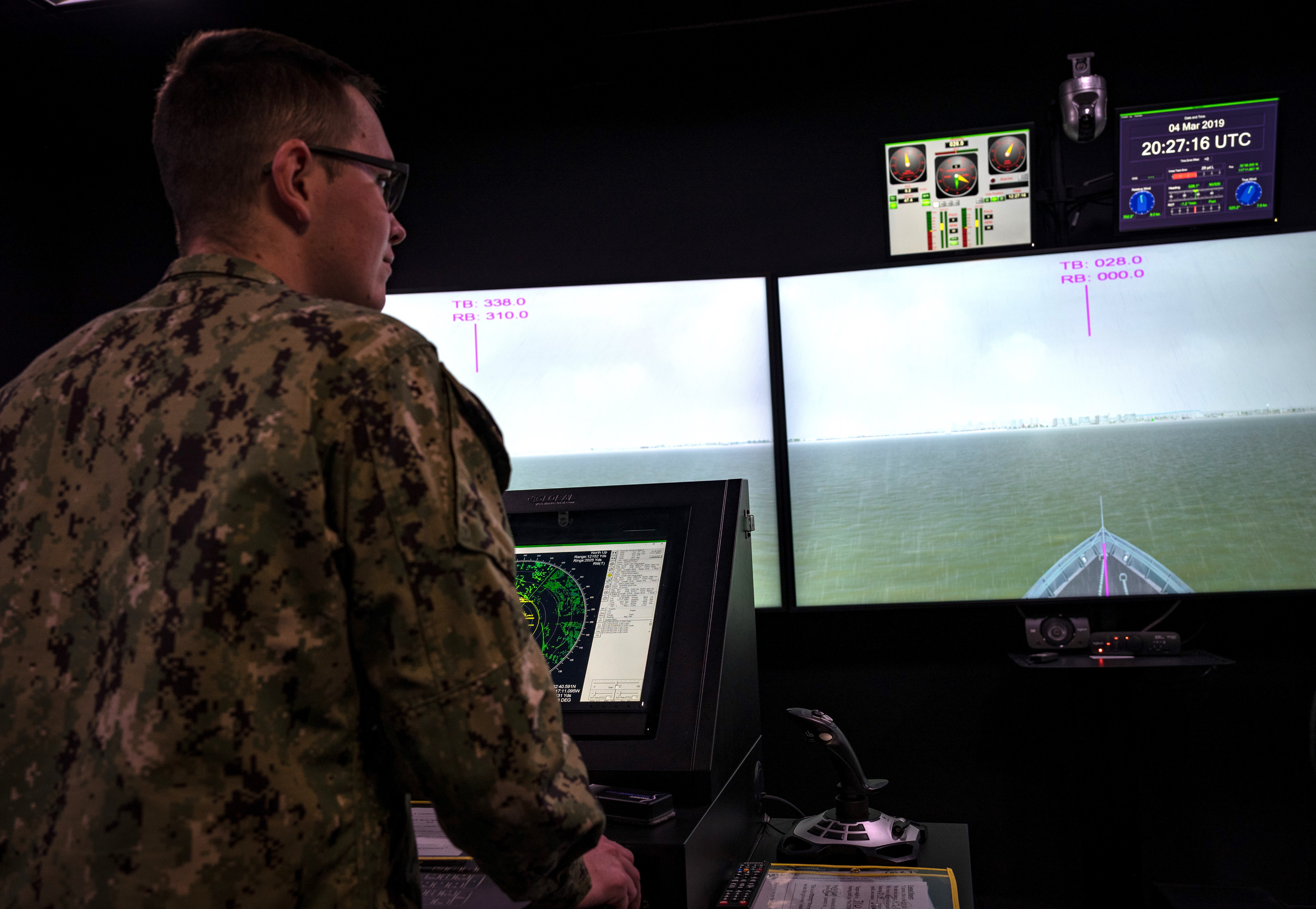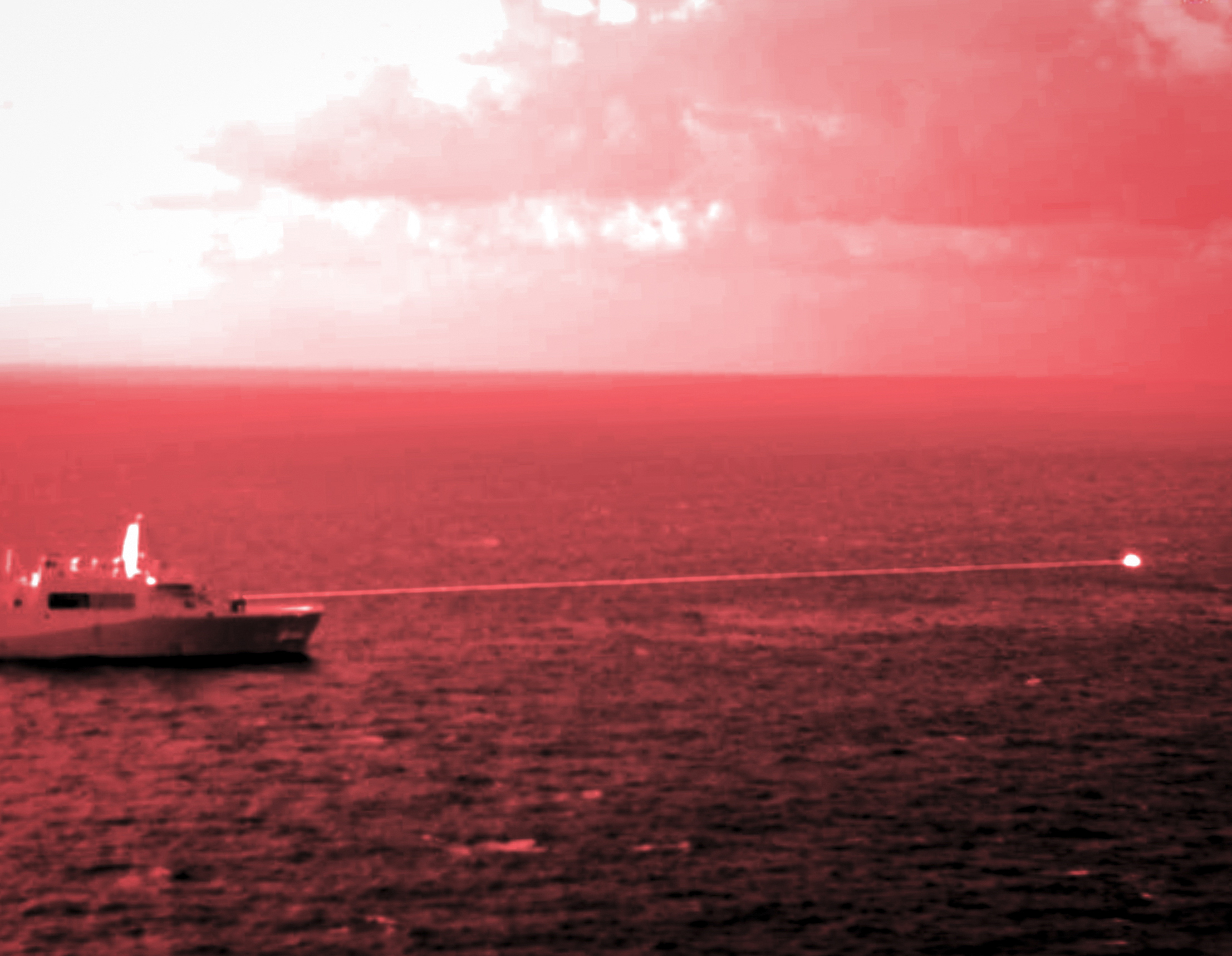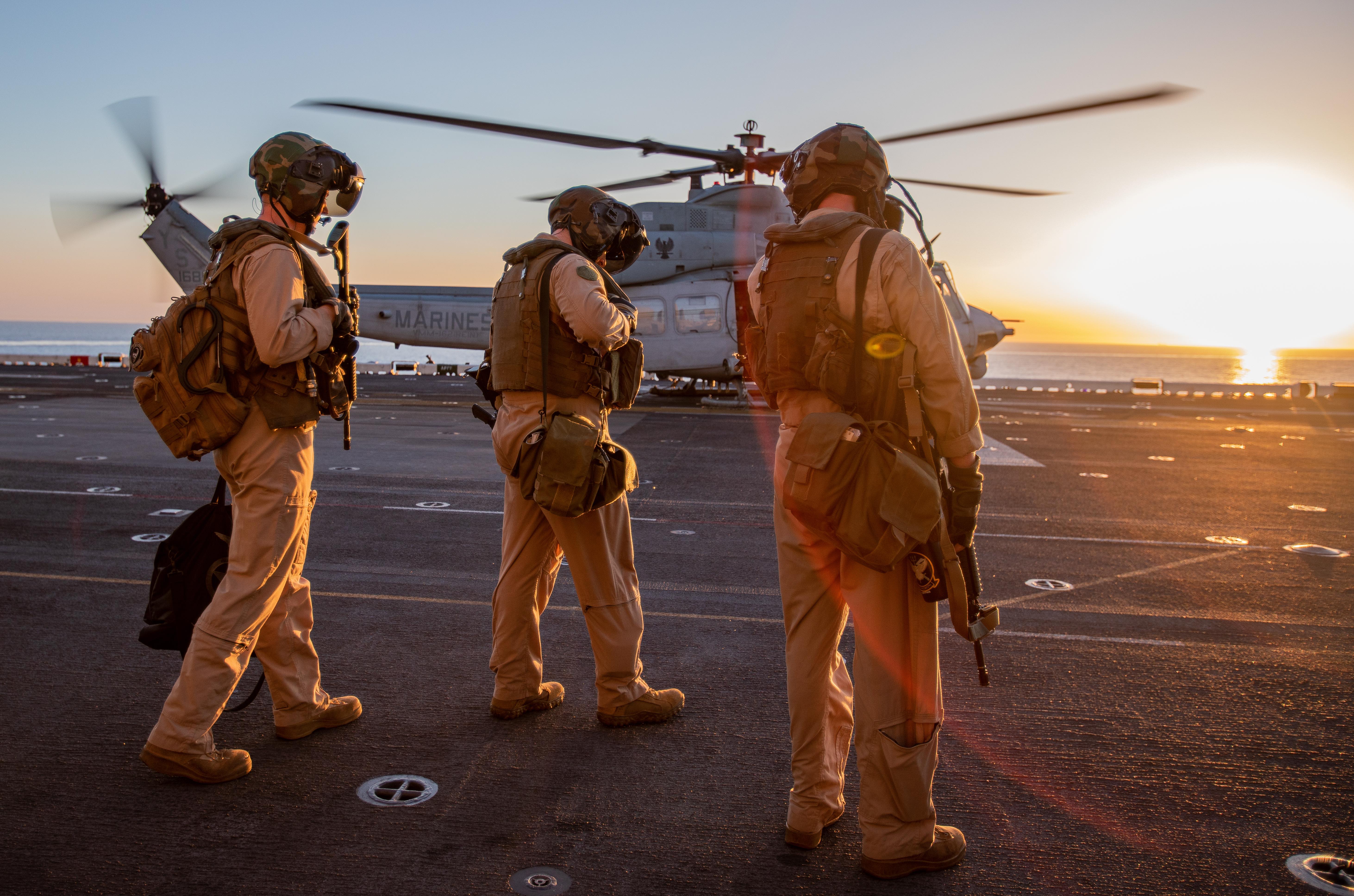
A force of 100 Marines, newly trained by Navy personnel, stand ready to respond, if ordered, to provide armed security aboard foreign commercial ships transiting the Strait of Hormuz, USNI has learned.
The Marines are members of the 26th Marine Expeditionary Unit (Special Operations Capable) embarked on the three-ship Bataan Amphibious Ready Group. They were flown off the ships in Europe and arrived in Bahrain for training as ship security teams, and additional teams of sailors already deployed or stationed in the U.S. Central Command region were undergoing the training, said a U.S. official familiar with the plans.
“We have more than 100 Marines on the ground in Bahrain. Many of them have already gone through and completed the training,” the official said. “They’ve informed me that they make up several teams and they are ready to go, if directed to do so.”
Training began ahead of the Aug. 6 arrival of the big-deck amphibious assault ship USS Bataan (LHD-5) and dock landing ship USS Carter Hall (LSD-50) in Bahrain. USS Mesa Verde (LPD-19), the third ship in the Bataan ARG remains in Europe.
The decision to train small teams with 15-19 Marines is intended to thwart any moves by Iran’s maritime forces – notably its Islamic Revolutionary Guard Corps Navy – to harass, intercept or seize the merchant vessels.
Defense Department officials offered few details publicly about the plan.
“We’ve continued to see Iran or the IRGC disrupting the free flow of commerce within the region, which is why the secretary [of Defense] made the decision that he did to deploy capabilities and more forces into the region to disrupt the IRGC from continuing its activity within the Strait of Hormuz,” Pentagon spokesperson Sabrina Singh told reporters Tuesday.
Described as bolstering a “zone defense” when needed, the teams would augment the existing security posture in place since early May, following a second incident where Iranian forces seized an oil tanker transiting the Strait of Hormuz. In response, Pentagon officials had ordered additional ships and aircraft to the region, which already has seen beefed-up capabilities including intelligence, surveillance and reconnaissance assets.
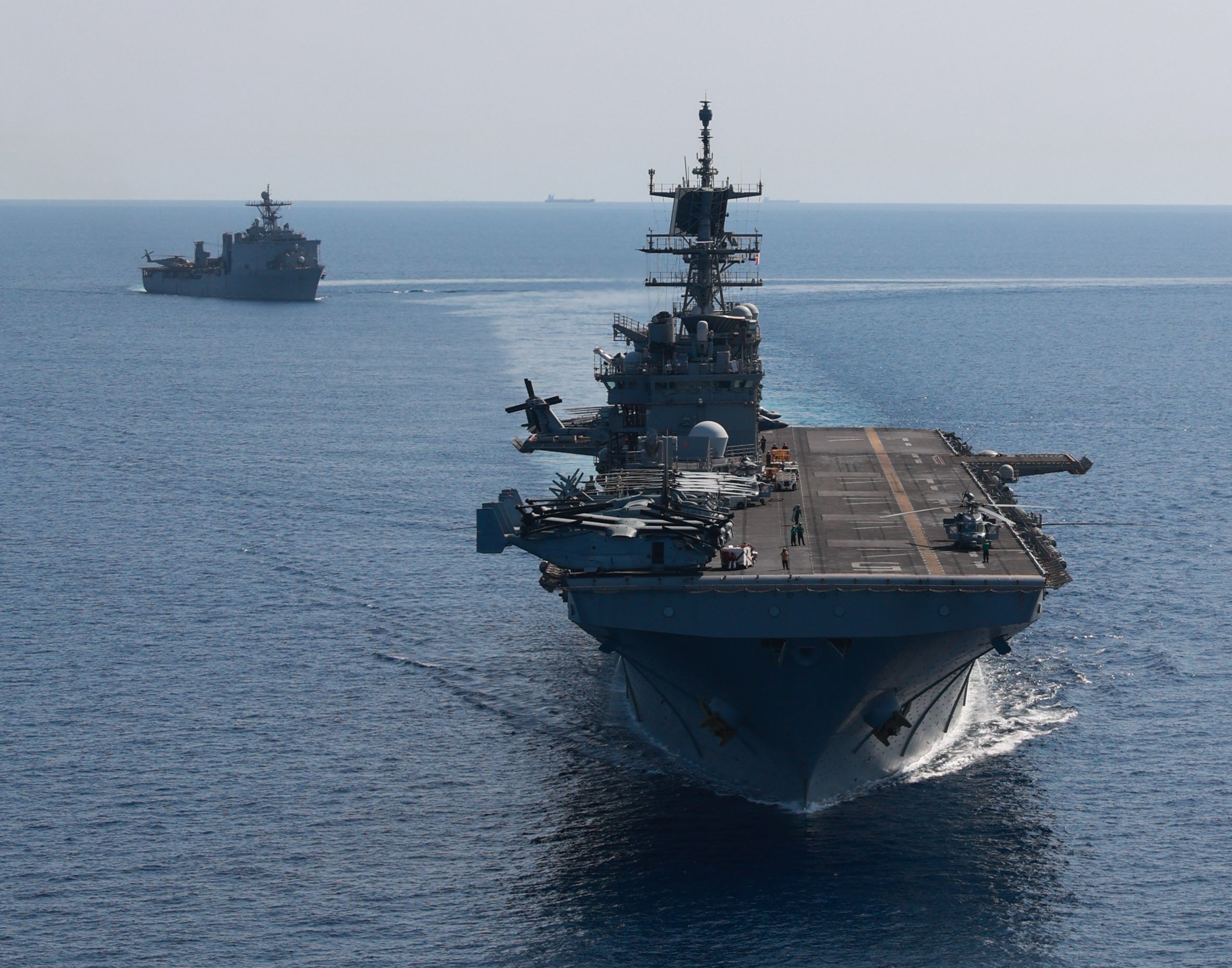
“We already have the ability to defend commercial vessels transiting in regional waters of different flags,” the official said. “What we’re specifically talking about is an option where you add an additional layer onto the existing (posture)… by putting security details composed of U.S. forces on commercial vessels – and that option has not been exercised. But other options exist and remain enforced as we bolster our presence in defense and in the Strait of Hormuz in response” to activities by Iranian forces.
“You saw it in early July, when we stopped two within the span of 24 hours… so that zone defense definitely worked,” he added.
In one of those incidents, Iranian patrol boats tried to intercept the MV Richmond Voyager, a Bahamas-flagged oiler and claimed it had collided with an Iranian vessel, according to reports. But they pulled away when Arleigh Burke-class destroyer USS McFaul (DDG-74), responding to the ship’s distress call, arrived on the scene.
Deploying security teams to specific commercial ships, presumably those considered at high risk to Iranian aggression hinges on getting the request for security assistance and agreement at multiple levels: The ship’s owner or operator, its nation of registry and the vessel’s master or captain, along with U.S. officials, the official said.
“The bottom line is the order to conduct and embark have not been given,” the official said, “and obviously there are a lot of considerations.”
It wouldn’t be for every vessel or just any ship. Hundreds of ships transit the Strait of Hormuz daily. Certain conditions must be met to approve a team’s deployment and employment before an order would be given, the official said, and that includes “compliance and at the invitation of the vessel owners and the nation under which the vessel is flagged.”
Stirring the waters
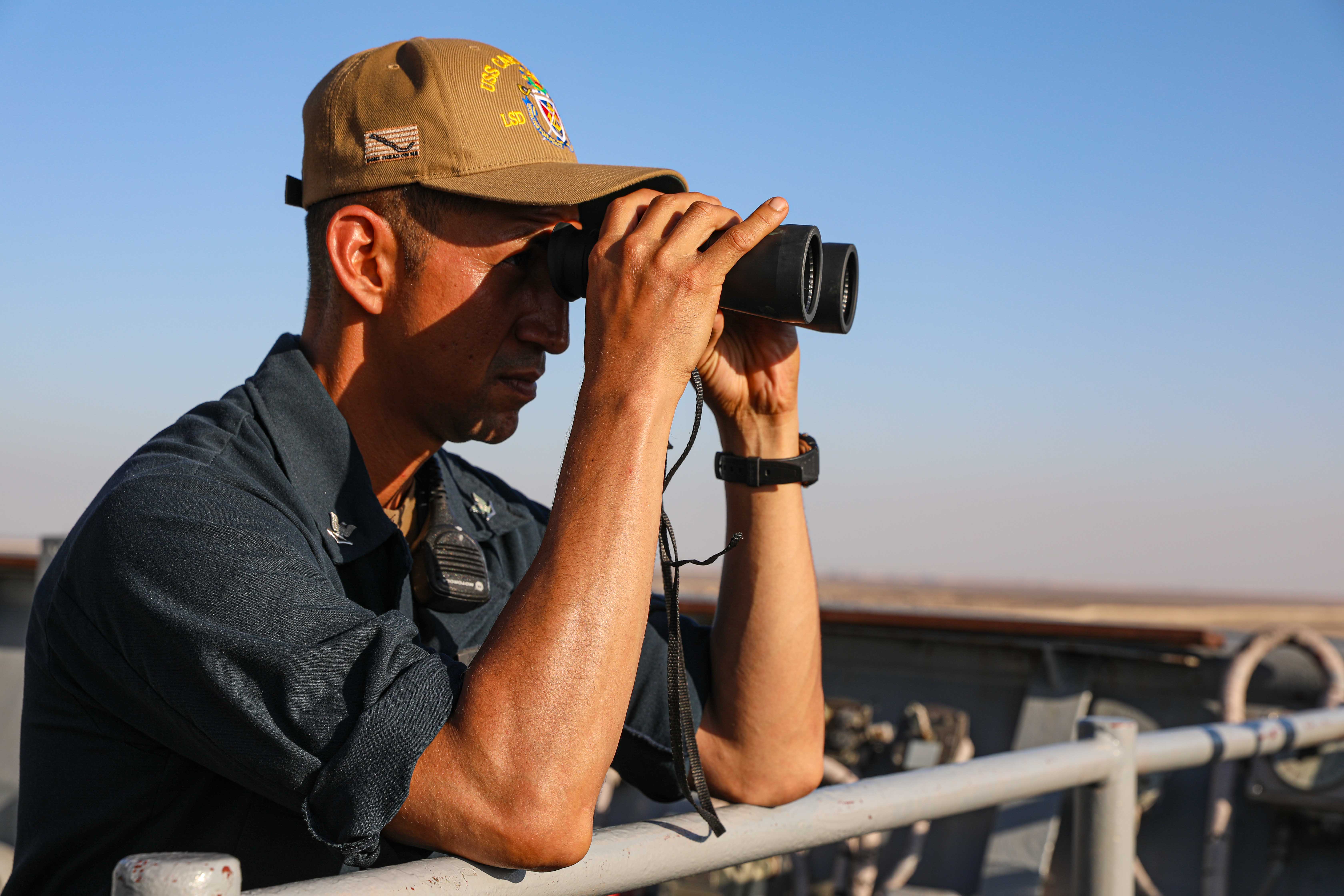
The Strait of Hormuz, a roughly 100-mile stretch between the Gulf of Oman and the Persian Gulf, is a critical chokepoint for commercial traffic including oil and liquefied natural gas.
Following initial reports last week that the U.S. planned to put trained security teams on commercial ships, Iranian patrol forces conducted drills on a disputed island, and Iranian officials complained about the Pentagon’s latest move, AL-Jazeera reported over the weekend.
U.S. forces have been on a higher defense posture in the Gulf region since the spring after the IRGC Navy forces seized two commercial oil tankers ships in late April and early May. In the April incident, Iranian commandos descended from helicopters on the Houston-bound, Chinese-owned MV Advantage Suite and seized the oil tanker with an Indian crew as it sailed in the Gulf of Oman. Iran claimed the ship had struck an Iranian vessel.
In mid-May, the U.S. 5th Fleet announced increased patrols by aircraft and ships by U.S. and allied forces patrolling the Strait of Hormuz.
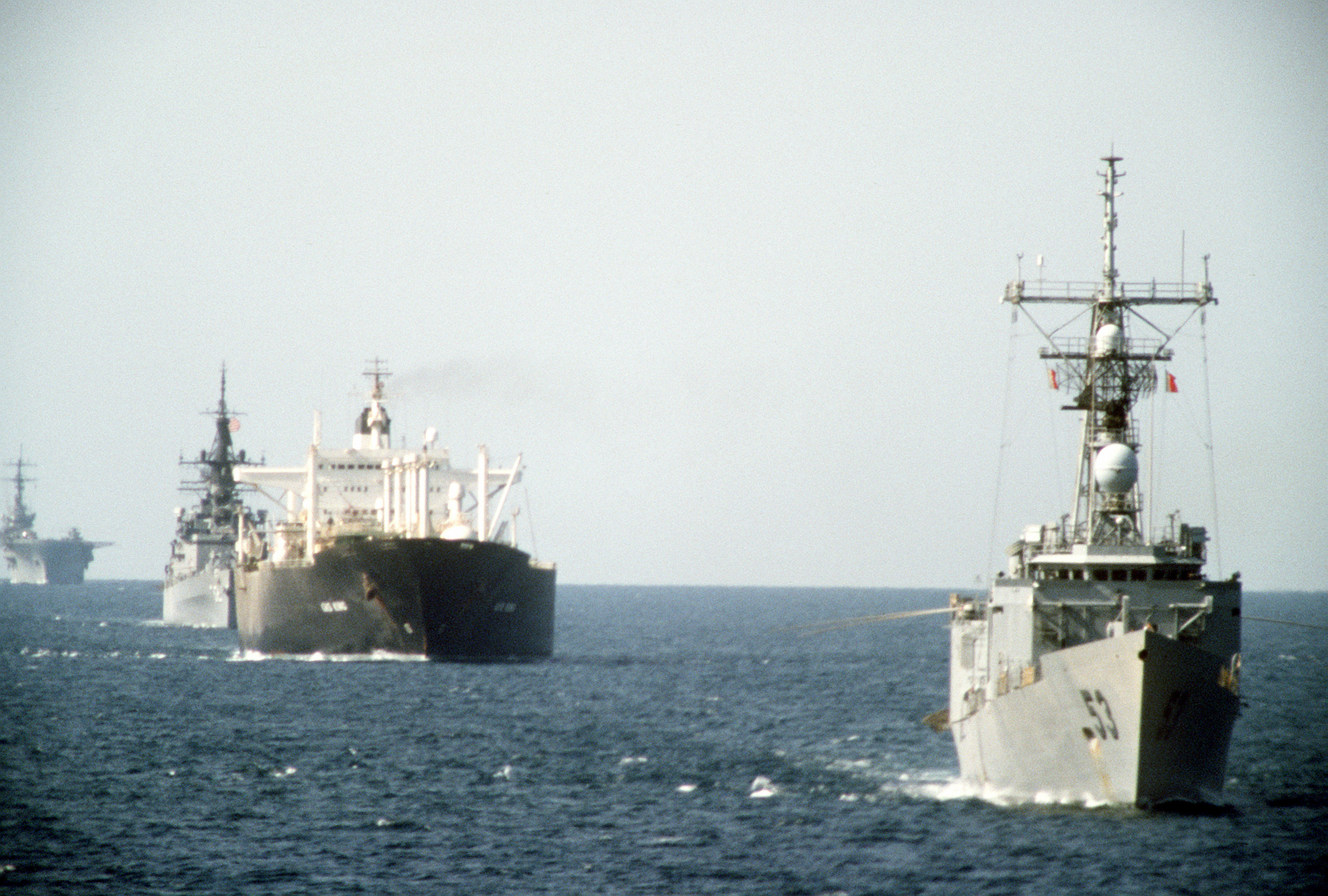
That stepped-up posture was intended to ensure freedom of navigation for commercial vessels transiting the Strait of Hormuz, officials said at the time. Iran “has harassed, attacked or interfered with the navigational rights of 15 internationally-flagged merchant vessels over the past two years,” U.S. Naval Forces Central Command said in a May 12 statement. Vice Adm. Brad Cooper, the 5th Fleet and NAVCENT commander, said the U.S. and its partners “are committed to protecting navigational rights in these critical waters.”
U.S.-Iranian tensions have flared over the years since the “oil tanker” war of the 1980s and the tanker-escort re-flagging Operation Earnest Will. At times, Iranian officials have threatened to close the Strait of Hormuz, which would upend the oil and energy market, and occasionally intercepts or seizes commercial ships over legal or financial disputes, as seen this spring.
But safe navigation has been threatened at times, notably in May and June 2019 when several commercial ships and oil tankers were struck by purported waterborne explosives attributed to Iranian forces. In late April 2015, Iranian Revolutionary Guard Corps patrol boats intercepted the container ship MV Maersk Tigris and fired shots across the ship’s bow when the captain refused to sail into Iranian waters. The IRGC seized the ship and released it 10 days later over presumably a financial dispute with Maersk, a global shipping company.
That incident prompted U.S. defense officials to escort some U.S.-flagged military vessels, as well as British-flagged commercial vessels, through the Strait of Hormuz. That lasted just about a week.
But military veterans and historians note that it’s rare that the U.S. trains and deploys armed, military security teams aboard non-U.S.-flagged commercial ships to defend against threats at sea.
“In the past, what we’ve done is escorted vessels, rather than put people on the ship,” said retired Rear Adm. Terry McKnight, author of “Pirate Alley: Commanding Task Force 151 Off Somalia.” “I think this is the first time in modern history that we’d actually put Marines on merchant ships for this type of operation.”
Recent events might shed some light. MV Suez Rajan, a Marshall Island-flagged tanker, has been sitting off Houston since May 29, its belly full of Iranian crude oil.
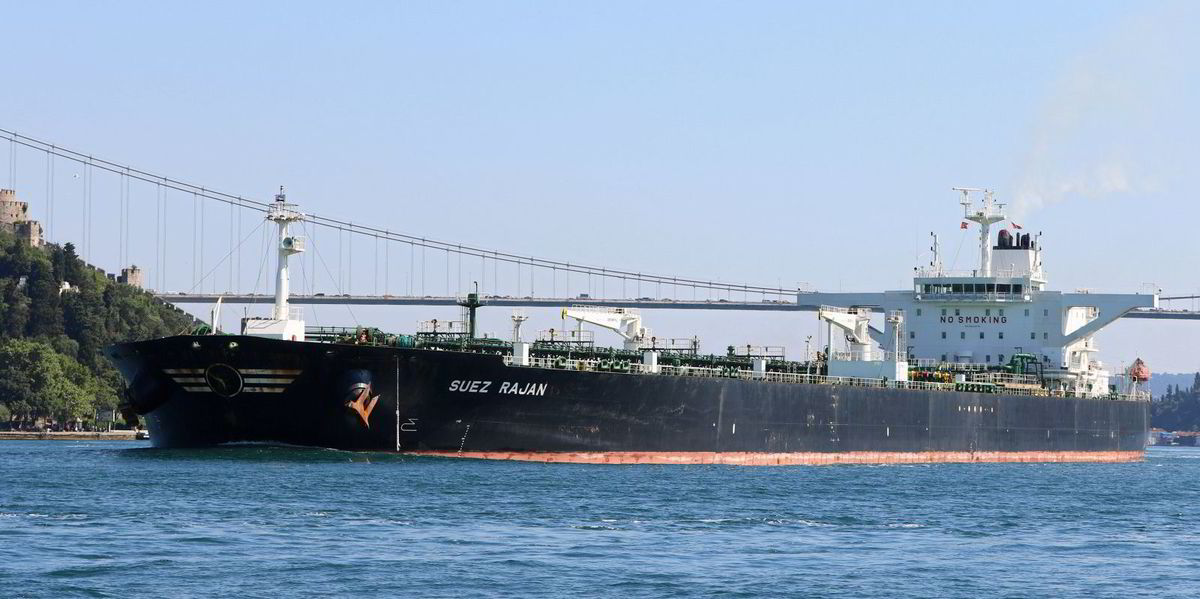
“They can’t offload that oil. No one wants to touch that oil for fear of repercussions from the Iranians,” said Sal Mercogliano, associate professor of history at Campbell University, N.C., and adjunct professor at the U.S. Merchant Marine Academy. “No oil company will touch that oil, because they worry that the Iranians will grab them coming out of the Persian Gulf.”
“It’s maybe why doing this, to alleviate that?” he said.
The only time that U.S. armed guards have been placed on ships has been during wartime, he noted.
Over 1,300 members of the Puerto Rico National Guard were trained as 12-person “Guardian Mariners” teams in 2003 and deployed aboard Military Sealift Command ships hauling military gear between the U.S. and Kuwait during the early Iraq War. Military troops protected U.S. merchant ships during World Wars I and II.
But in light of Iran’s actions, “overall this is pretty small, even compared when Iran was being much more provocative in 2019, when we had instances of limpet mines and drone attacks on ships,” he said. While problematic, “the amount of attacks where the Iranians have executed are infinitesimal when you look at the overall traffic that goes in the Gulf.”
More recently, he added, Iran has taken ships “but they eventually let them go. They’ve been good with the crews. It’s been an issue,” he said, noting the 2016 interception and day-long detaining of two U.S. Navy riverine boat crews that drifted into Iranian waters.
“I’m kind of at a loss as to why the U.S. is kind of putting a line in the sand here regarding Iran now, beyond the fact that they’re worried about what any sort of Iranian attacks could mean to the overall costs in oil and energy around the world – while at the same time they seem quite willing to back off in any assistance for grain shipments on the Black Sea, for example,” Mercogliano said.
Rules of engagement
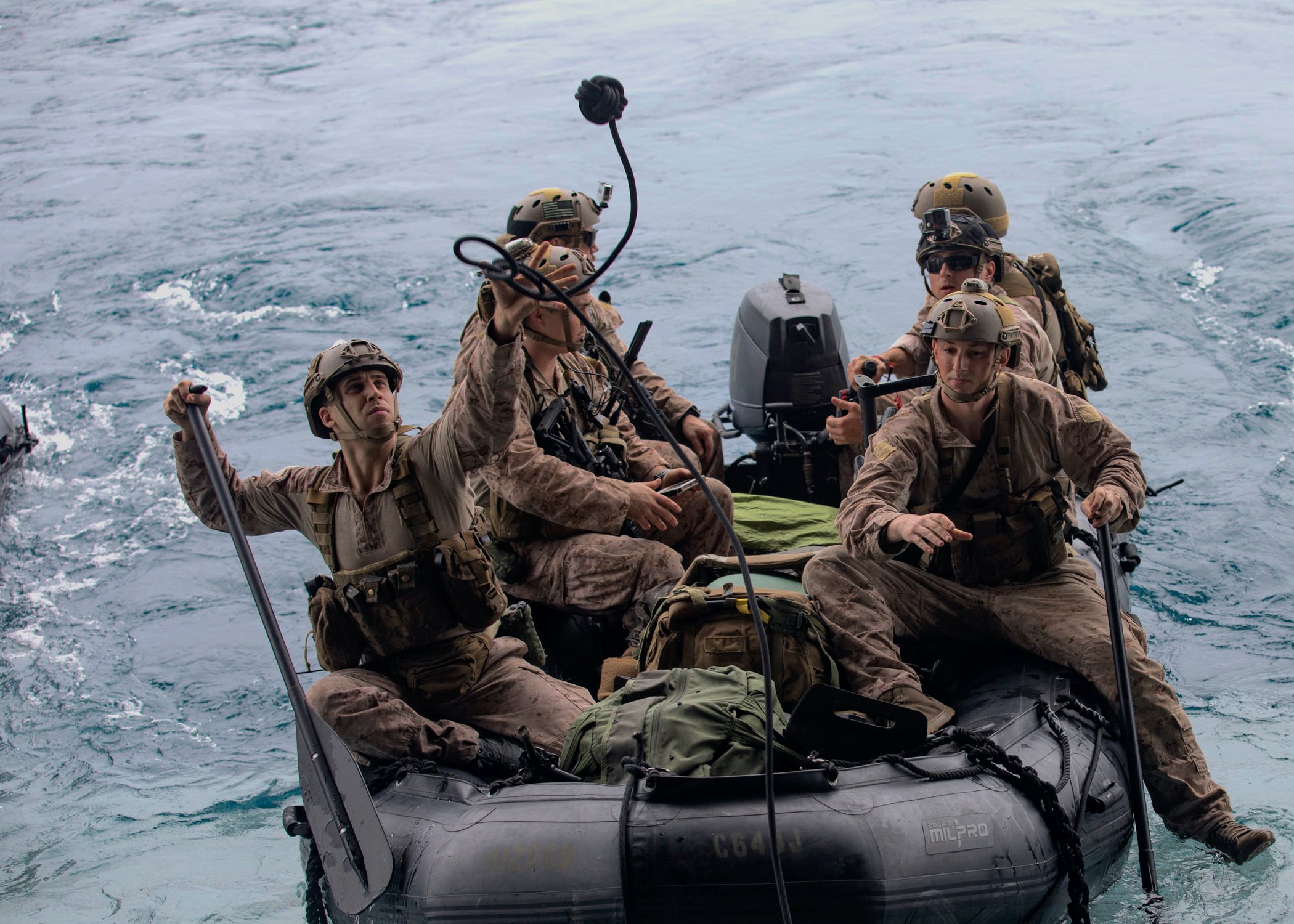
If the Marines do accompany the ships, questions still remain about risks, McKnight said.
“My biggest concern is, what are the rules of engagement? If we’re going to put them on there and say, come on, Iranians, just try us and see what happens, I think that’s kind of risky,” he said. What happens if the Marines come under attack, “because how many times have we seen this in the Strait of Hormuz… vessels that we’ve had opportunity to engage with the Iranians and we have basically let them harass us?”
The security teams of Marines and sailors would deploy to a ship only when all conditions are met and would remain under the military’s operational control, according to the U.S. official.
Mercogliano wondered, too, about the rules of engagement, noting that armed naval teams that steamed on ships during World Wars I and II operated “under distinct rules under the Navy, not under the ship’s master. When it came to opening fire, it was up to the armed guard detachment onboard. So it would really have to be hashed out about what the deal is.”
The military’s latest plan should require clear, understood rules of engagement, he said.
“A ship’s master or the company have no say in how the Marines are going to operate,” Mercogliano said. “It’s a completely separate thing. Are they going to open fire without permission of the ship’s master or the company?”
But if U.S. teams board a commercial ship and things go south if Iranian forces intercept it, then “you just raise the question: If the Iranians intend to board, do these vessels become an Alamo, where you’re going to fight to the last man?” he added.
With nearly 20 Marines, presumably heavily-armed with crew-served weapons, the security team might provide credible deterrence, several experts said.
“If you want to deter Iran or the IRGCN, you need more than a team of 20 people with small arms,” said James Kraska, professor of international maritime law and chair of the Stockton Center for International Law at the U.S. Naval War College in Newport, R.I., unless “they come packed with some firepower.”
“With a force that size, that would suggest a more-aggressive rules of engagement, which is a higher level of deterrence,” Kraska said. A smaller, lightly-armed force might risk boarding and capture by the IRGC Navy, so going larger “would be more likely to have more a deterrent effect.”
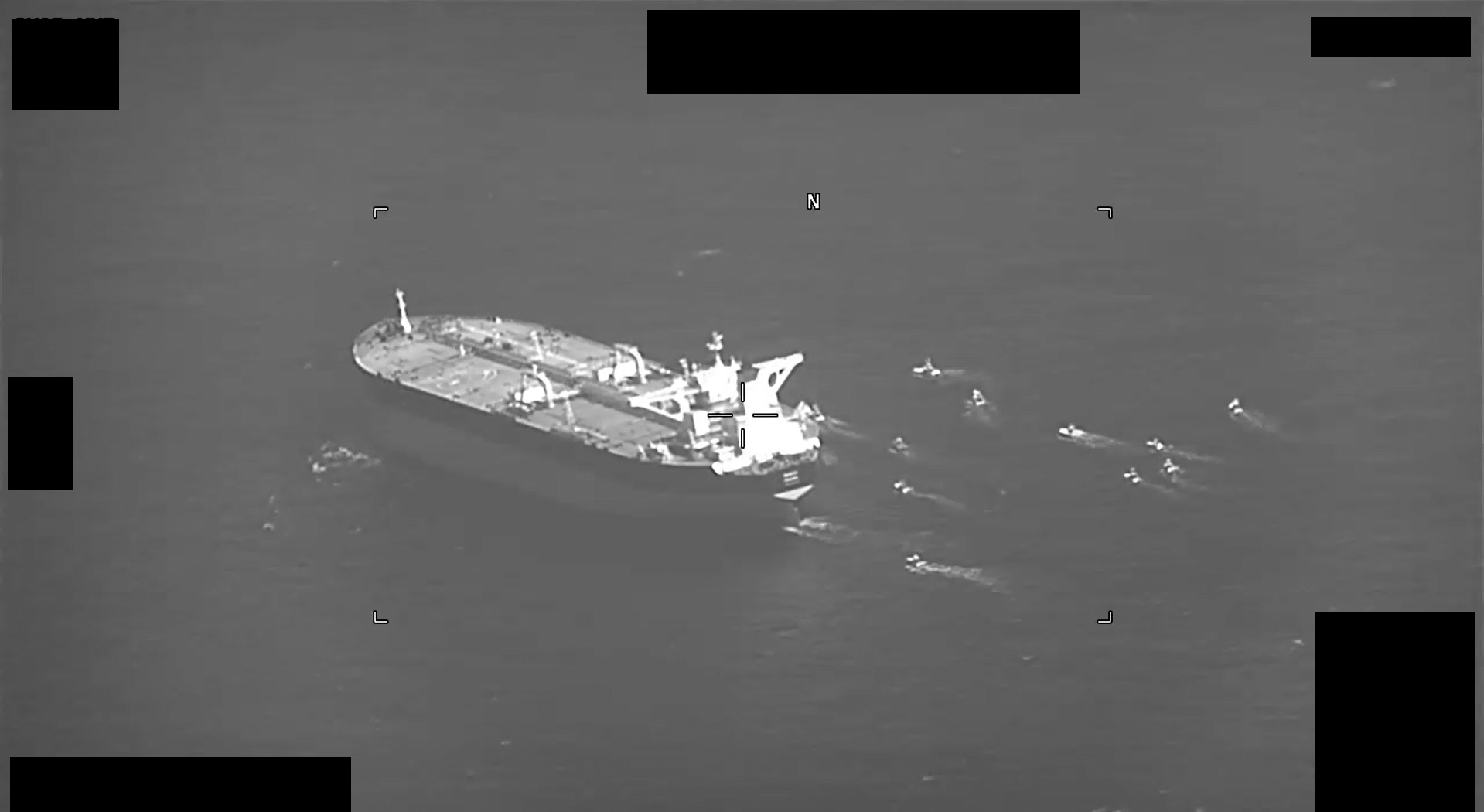
“Twenty Marines onboard a ship is not enough to threaten the country of Iran. It’s clearly a defensive deployment,” he added.
Moreover, the placement of armed security – even if military troops – doesn’t change a merchant ship’s neutral status.
“It’s still a merchant ship, and it’s not a target,” Kraska said. “They are still protected merchant ships. These are not warships suddenly just because they have protection aboard.”
The U.S. is not in an armed conflict with Iran, he said. That means it would be an unlawful use of force against the merchant ships, even if they have Marines aboard.
The Marines and sailors on the security teams retain their right of self-defense, Kraska said. Their mission is to protect the ship and their presence aboard the ship would be akin to a civilian guard.
“They’re not entitled to threaten Iran, threaten the territorial independence or political integrity of Iran,” he said.
Force is allowed when reasonable and necessary, Kraska said. But Iran does not have a rationale, and commercial ships are allowed to pass through the Strait of Hormuz under the Law of the Sea.
“As long as they are continuous and expeditious, they are entitled to transit through. They can protect themselves. They can launch and recover devices, like drones. They can spin radar,” he said. “They can collect information necessary for their defense. They can prepare for self-defense at all times, which is an inherent right.”
Other considerations
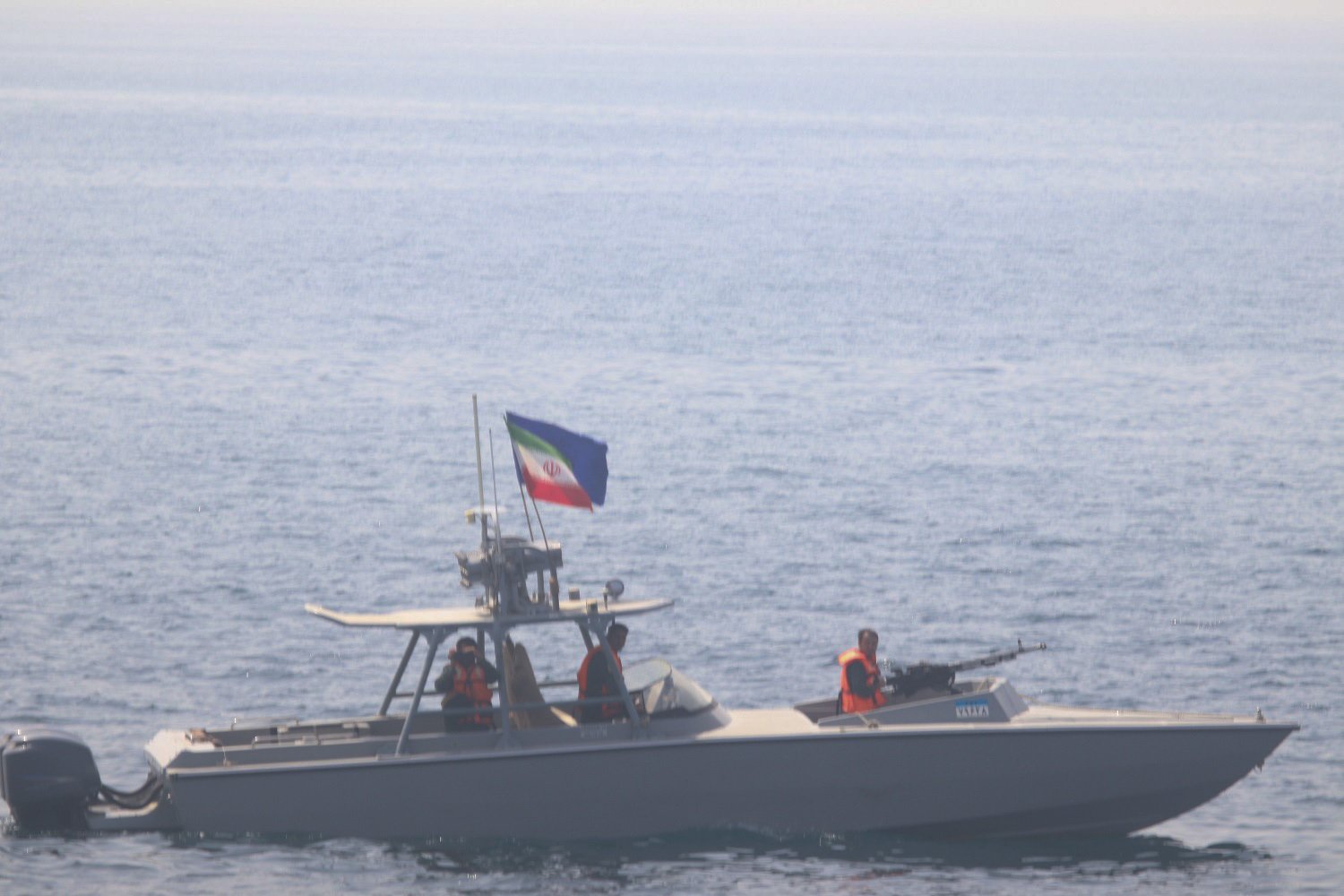
The placement of armed troops on commercial ships is legal, under international maritime law, experts say, but the plan as described raises other legal, operational and financial considerations that military, government and shipping company officials will have to weigh, likely on a case-by-case basis.
“If you start putting armed guards aboard, does that raise your profile? Do you become a target at that point, and does all of a sudden the insurance increase?” Mercogliano said. “This opens up a Pandora’s box of issues… that are very hard to figure out.”
Mercogliano said the plan “raises lots of questions. Plus, to get this done, they’re going to have to get the sign-off of the registry, the country and the companies involved. There’s a lot of ships that go through the Persian Gulf. Even with a MEU, I don’t think you’ll be able to cover every vessel going in and out of the Gulf. And how do you rotate them in, rotate them off, get them on? That’s a high-trafficked area.”
Moreover, he said, the placement of U.S. troops on foreign-flagged ships “raises the issue about what is the purpose of a U.S. flag and registry.”
Many foreign ships are registered in countries like Panama, Marshall Islands and Liberia because they have lower taxes and “operate under much different rules and regulations than a U.S.-flag (ship) does,” he said. “One of the whole points of being of a national registry is you get the protection of that nation. Now the U.S. is basically saying, we’re going to protect them. The question is: What does that do to the prospects of having U.S. merchant mariners and U.S. Merchant Marines in a time of war? Because if the Navy is going to come protect you if you are the Marshall Islands, then why would anyone want a U.S. registry at all?”
Pirates and private guns
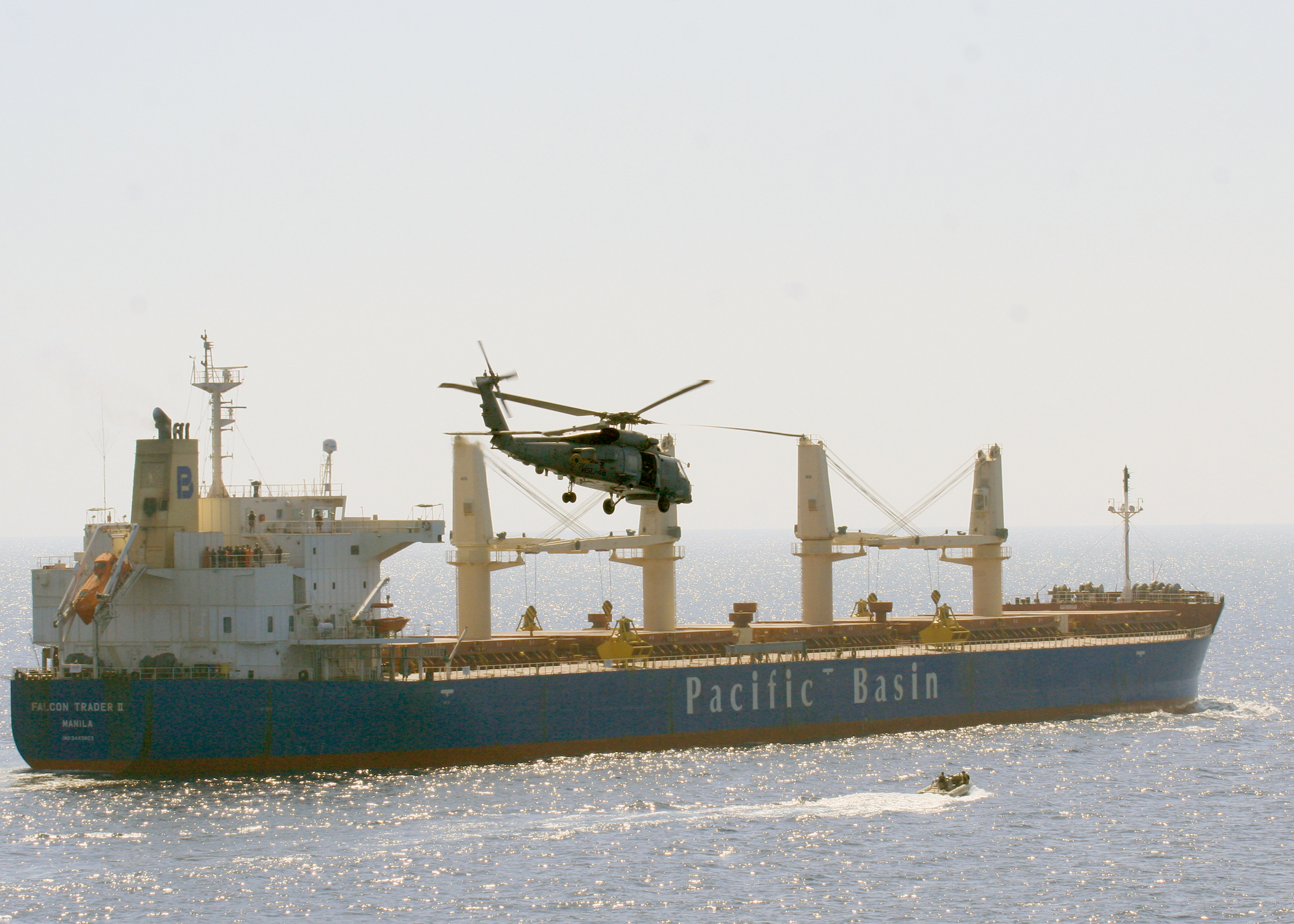
The deployment and potential employment of the security teams of Marines and sailors, experts say, differ from what the U.S. and other countries have done in countering continuing threats from pirates, often tied to transnational terrorist groups or regional crime organizations. Spates of hijackings and hostage-taking – particularly over the past 15 years before concerted efforts by a U.S.-international task force reduced incidents at sea – prompted more global shipping companies to hire private maritime security companies to put hired guns on ships transiting the hot areas off Somalia, the Gulf of Aden and the Gulf of Guinea.
McKnight commanded CTF-151 in 2009 when Somali gunmen hijacked the U.S.-flagged MV Maersk Alabama. Navy SEAL snipers shot and killed three pirates who took the captain hostage on the ship’s lifeboat. At the time, pirates ran rampant across the Gulf of Aden and off Somalia as most commercial vessels had no onboard security.
“They thought, well, the navies would protect us,” he recalled. “But there’s 30,000 vessels that go through the Gulf, there’s no way that we can protect all the ships.”
Private security firms encountered problems as well.
“Back then, you couldn’t have armed security team go into a lot of the ports,” he said. A
nd in the shipping world, time is money, and many companies didn’t want to stop their ships to embark and disembark security teams, he added.
But the danger from pirates, who are often stateless, differ from threats from Iran, experts note.
With pirates, “just the presence of warships was enough to deter them at times,” Mercogliano said. “But this is going to be a lot different, obviously, because you’ve got a much bigger, robust military behind it. And Iran isn’t doing this willy-nilly. They are seizing ships, specific ones. They are talking about ships that have been condemned in ports… In many ways, they argue that they are executing legal fashion. Anyone can arrest a vessel, and Iranians are going out and seizing vessels that they’ve arrested.”


